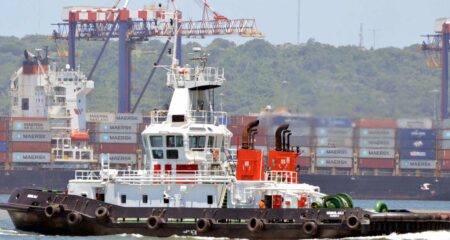 Connectivity. It remains the single most important commodity on the planet today. Without it, data isn’t the new oil, hybrid isn’t the new working framework, global clients are not on the agenda and communication returns to the pigeons.
Connectivity. It remains the single most important commodity on the planet today. Without it, data isn’t the new oil, hybrid isn’t the new working framework, global clients are not on the agenda and communication returns to the pigeons.
According to the OECD, fibre overtook cable as the primary fixed broadband technology in OECD countries in mid-2022, exceeding 161 million subscriptions, and this is still rising as fibre gains traction. But with connectivity comes complexity. As Tim Archer, head of channel at SkyWire points out, there are so many types of connectivity that companies aren’t sure where to start, or what it all means.
“Fibre, broadband, wireless, DSL, satellite, mobile – these are some of the most well-known types of connectivity solution and it doesn’t even include some of the sub-sets of internet connectivity,” he explains. “When a business looks at this list, it’s easy to see why there’s confusion. They all come with their own advantages and disadvantages so choosing the right one can be complicated.”
In the current economic climate, companies are making decisions based on price, which is not the right direction for connectivity. A cheap package could end up costing the company far more money because it isn’t capable of keeping up with business demands and customer expectations, resulting in poor service and performance.
Another issue is that companies just want simplicity. They want it to work. And they want it to work all the time. Which is why fibre and fixed wireless are often touted as the top-tier solutions to provide connectivity that’s agile, fast and scalable. Choosing the right connectivity option for the organisation is less about its prowess and more about how it will meet the unique needs of that organisation. Wireless is often used as the fail-over solution for fibre, even though the latter isn’t as stable or as reliable as it should be. Often, it is wireless that’s the real game-changer as it is on a par with fibre while delivering optimal reliability.
“Fibre is fast, efficient and operates at a higher bandwidth,” says Archer. “It allows for the transmission of data over longer distances and isn’t affected by electromagnetic interference. However, wireless is faster than fibre and has a lower rate of latency.”
Extraordinary
When talking speed, fixed wireless is extraordinary. In 2013, the time it took for information to travel from Chicago to New Jersey on a fibre-optic cable was 12.98 milliseconds. At the time, this was something out of a science-fiction movie. It was also completely trounced by a microwave-based network that managed the same distance in 8.23s. This is, according to the Register, the equivalent of a human travelling just over 574km/h. For companies that rely on speed and information to thrive and survive, this level of connectivity is critical.
Think a stock exchange. Think a brokerage firm. Think intensely reduced latency to make money. According to Accenture, “a 1-millisecond advantage in trading applications can be worth US$100-million/year to a major brokerage firm, by one estimate”. A $100-million/ms price tag makes choosing the fastest solution with the lowest latency a, as the cliché says, no-brainer. However, fixed wireless has its downsides.
“Fixed wireless relies on visibility to get its speeds right,” says Archer. “In densely populated or built-up areas, buildings can get in the way of the signal, even if the signals have been positioned properly. However, this doesn’t change the fact that, invariably, it will be faster regardless of the environment as it can move directly over buildings and objects rather than having to weave around them, like fibre. Fixed wireless is also a lot cheaper to install. There is new technology that’s been developed to take wireless to the next level and that will no longer require line of sight to deliver service at optimum levels of connectivity.”
Fibre demands heavy investment into infrastructure. The cables have to wind their way around buildings, over lakes and dams and into homes, offices and spaces. This makes installation a lengthy and expensive process with the expectation of ongoing maintenance to minimise the risk of signal degradation and line damage. This form of data transfer will never be as fast as fixed wireless, nor as easy to install, but it has its benefits for businesses that want a stable and reliable connectivity solution.
 “Choosing the platform that fits the business is down to three key factors,” says Archer. “How desperately you rely on speed, the importance of reliability, and accessibility.”
“Choosing the platform that fits the business is down to three key factors,” says Archer. “How desperately you rely on speed, the importance of reliability, and accessibility.”
Speed. For those that need 1ms to save $100-million, fixed wireless is ideal route to low-latency, high-speed success. Fibre doesn’t have the horsepower to beat it and won’t meet those expectations. Finally, accessibility is all dependent on whether or not fibre has been installed in the area – if not, fixed wireless is the fastest route to connectivity, if yes, then wireless still wins as it offers both the speed and reliability needed by the modern business.
“Perhaps the best way to choose between the two is to make it someone else’s problem,” concludes Archer. “A third-party service provider that lives and breathes the connectivity conundrum is well placed to ensure that the solution you choose is the solution that will deliver precisely what your company needs. Contact a tier-1 telco with one of the largest networks in the country across all nine provinces — SkyWire.”
For more information visit www.skywire.co.za or visit SkyWire’s TechCentral hub.
- This promoted content was paid for by the party concerned




